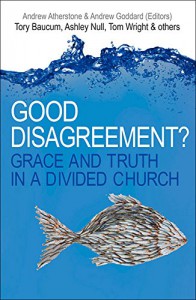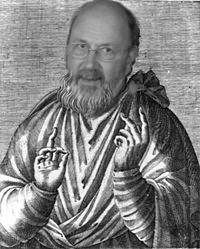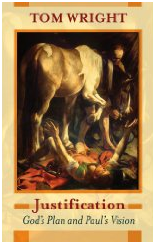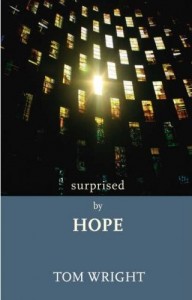Review: God And The Pandemic
 The Christian faith is relevant. At least, it’s meant to be.
The Christian faith is relevant. At least, it’s meant to be.
We have, of course, skewed our definition of “relevant” to mean something like “trendy, hip, and attractive to young people.” Relevance is actually deeper than that. It is about being connected, responsive, and impactful with respect to the real moment. 2020 is a very real moment.
In the midst of the pandemic the relevance of following Jesus has been (understandably) questioned. The doors of Christian churches have been shut, our liturgical and summer festivals halted. The rites and rituals for births, marriages, and deaths, have been cancelled, postponed, or severely curtailed. What are we left with?
Some have given a utilitarian defense: We have kept foodbanks open. We have provided meals, and pastoral care networks. We have coordinated volunteers, and generally been facilitators of decent folk. It’s true. But others have done that too.
Some have slipped into seize-the-moment optimism: We have expanded our horizons. We’ve gone online. We’re more accessible then ever before. Our viewer numbers are bigger than our former congregations. This is great. We have responded well. But so have others. What makes this distinctively Christian?
Real relevance happens at the level of our core message and way of life. For us, it is all about Jesus. If Jesus is relevant, then Jesus makes sense, and Jesus makes sense of life. This is the essense of the Scriptures; the Bible is not some abstract articulation of doctrine, it is applied belief which grows from the intervention of God in real times and places. As people devoted to Jesus, our words and actions are meant to be similarly connected, responsive, and impactful. Frankly, we should have something to say.
Many have said things poorly. Leaving aside the ridiculousness of prosperity preachers naming and claiming immunity and right-wing political conservatives anathematising face-masks, even the estimable John Lennox has asked Where is God in a coronavirus world? but doesn’t do much more than reiterate his defense against New Atheism. Relevance isn’t just about seizing a new opportunity to say the same things in the same ways, it’s about showing how the same truths are alive enough to connect with, respond to, and impact a new set of circumstances; the gospel is not defeated by shifts in context.
Tom Wright’s God and the Pandemic, is relevant, properly relevant.
It’s short, it’s easy to read, and it’s substantial. It is simple. Five chapters: Introduction to the context, followed by relevant expositions of the Old Testament, the Gospels, and the rest of the New Testament, and a conclusion asking “where do we go from here?”
And it is not trite. In fact, the essence of Wright’s message is to push back at our propensity for platitudes. To read the signs of the times isn’t about digging in to the moment to find some hidden “inner cosmic moral mechanism” (p17), as if 2020 locates us on the end-times roadmap for those who are privy to a plan. It’s about locating ourselves within the revealed heart of God and the divine narrative of his history.
Necessarily, that centres us on Jesus. “The minute we find ourselves looking at the world around us and jumping to conclusions about God and what he might be doing, but without looking carefully at Jesus, we are in serious danger of forcing through an ‘interpretation’ which might look attractive… but which actually screens Jesus out of the picture.” (pp19-20). “If there is one God, and if he has come in the person of his own son to unveil his rescuing purposes for the world, then there can be no other signs, no other warning events, to compare with this one” (p22). “Jesus is already reigning”, he assures us, his “rule over this world” is a present one, “starting with his resurrection and ending when he has finished the work of subduing all ‘enemies’ – the last of which is death itself, a very relevant consideration at this time (1 Corin. 15.25-26)” (p24).
If you want to know what it means to talk about God being ‘in charge of’ the world, or being ‘in control’, or being ‘sovereign’, then Jesus himself instructs you to rethink the notion of ‘kingdom’, ‘control’ and ‘sovereignty’ themselves, around his death on the cross. (Page 25)
Wright reaches into the Scriptures and shows how Jesus is presently present. That is relevance. He is neither located in the past with dusty words of lore, or waiting in the future with fantastical notions of shallow victory. Jesus is present, ruling, reigning, working, within the broken plagued world.
The demonstration and inauguration of that ruling, reigning work is the cross. And therefore the victory, the hope, the renewal, and all the other things we’re looking for in this present moment, is also found there. Pointing to the episode of Lazarus’ death, Wright reminds us how the King brings the Kingdom of God: “He just weeps. And then – with the authority born of that mixture of tears and trust – he commands Lazarus to come out of the tomb” (p28, emphasis mine). How much more the authority revealed in the pain of Gethsemane? How much more the authority revealed at Calvary? Christ’s power is the form of authority that is made strongest in weakness, and which we discover by sharing in the suffering of Christ as we (relevantly!) engage with this world.
The clearest call from Wright, then, in this season, is to lament. We weep, we mourn, and we respond as the Holy Spirit empowers us within that helplessness. Isn’t that the sort of kingdom that Jesus envisages, inherited by the meek and those who mourn and those who are poor in spirit (crf. the beatitudes)? Isn’t that a conceivable embrace of the current moment?
…God does send thunderbolts – human ones. He sends in the poor in Spirit, the meek, the mourners, the peacemakers, the hunger-for-justice people. They are the way God wants to act in his world…. They will use their initiative; they will see where the real needs are and go to o meet them. They will weep at the tombs of their friends. At the tombs of their enemies. Soem of them will get hurt. Some may be killed. That is the story of Acts, all through. There will be problems, punishments, setbacks, shipwrecks, but God’s purposes will come through. These people, prayerful, humble, faithful, will be the answer, not to the question Why? But to the question What? What needs to be done here? Who is most at risk? How can we help? Who shall we send? God works in all things with and through those who love him. (Pages 34-35)
Wright’s book, therefore, has a prophetic edge. A lot of our church energy has gone into shoring ourselves up, battening down the hatches. We are either fearful or comfortable with respect to how disturbed our church meetings and finances are. But those things are irrelevant. We are not about re-spinning our strength for the “new normal”, we are to be moved by lament in the gift of the present time.
We groan with all creation, Paul tells us in Romans, as we long for the completion of it all. This is a revelation in our Scriptures, the word of the Lord to us. Can we not proclaim to this world, by giving voice to this groan? Do we not know the deep joy of meeting the Spirit of adoption, the Spirit of the Father, the Spirit of Jesus, who also groans within us? A happy dapper brave face will just reveal ourselves. But if we groan with his Spirit, we don’t just have some sort of chance of experiencing an awareness of Jesus, we find ourselves being sent in the same way he was sent, sharing in his authority, following his commission. “We hold the vision and the reality side by side as we groan wih the groaning of all creation, as as the Spirit gorans within us so that the new creation may come to birth” (p74).
This, then, is also a vocational book. If there is any utilitarian potential in this pandemic it is this: that it may catalyse the church to remember itself, by remembering Jesus and the raw, almost primal nature of his kingdom. The tears of the King are the pathway to a new creation and Wright calls us to it.
The followers of Jesus are called to be people of prayer at the place where the world is in pain. (Page 42)
Wright does unpack some of the outworking of it all. He dips into how Christians have turned their groans into actions in the past, willing to care where the state has not, and so showing how God’s kingdom is different to the world. He cautions against the privatising of worship through the prolonged pivot to online services. He warns of following the “secularising lead” – “The sign of the new creation, from the ministry of Jesus forward, has been the healing presence of Jesus himself, and his death and resurrection above all” (p69). There is a necessary place for public worship, public help, public speech as a way to express God’s Kingdom. The world is destabilised, and the “pagan subtexts” (p 72) of our secularised situation will play out in a fight between the gods of money, health, and deadening pleasure.
These are not unprecedented times. But this is a season that is forcing us to be honest. This is the case for the Western world particularly, and the Western church as well. Wright’s book helps express that honesty, and perhaps some repentance. If nothing else, it helps us groan well.




